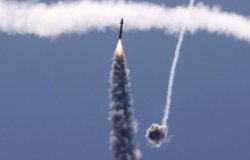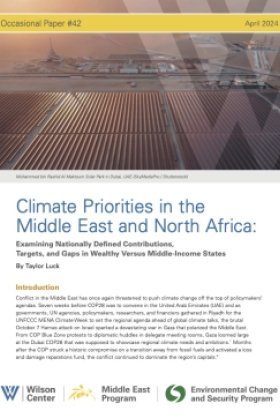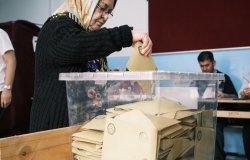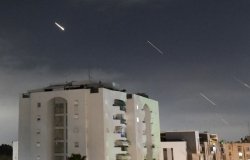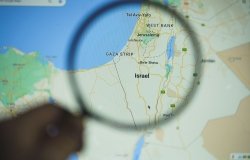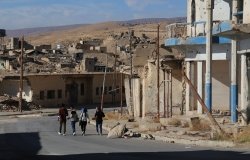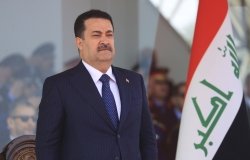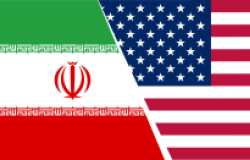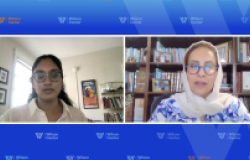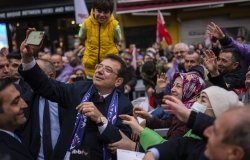The Iranian Presidential Elections: What Do They Tell Us?
Robin Wright, Public Policy Scholar, Woodrow Wilson Center; Farideh Farhi, Independent Scholar and Affiliate Graduate Faculty, Political Science, University of Hawai'i at Manoa; Fariborz Ghadar, Senior Advisor, Center for Strategic and International Studies; Emile El-Hokayem, Political Editor, The National, Abu Dhabi, UAE
Overview
Robin Wright described the current uprising in Iran as the fourth phase in a century-long struggle over empowerment issues, which began with the 1905-1911 Constitutional Revolution, continued through the Nationalist movement led by Prime Minister Mossadegh in the 1950s and the 1979 revolution. The 2009 uprising sets a stunning precedent for both Iran and the wider Islamic world. Three weeks into the crisis, the political fissures pit two rival camps against each other: The New Right, centered around President Ahmadinejad and backed by Supreme Leader Ayatollah Ali Khamenei, has the political power and the tools of state and security to use. The New Left, which includes two former presidents as well as Prime Minister Mousavi, has the widest opposition coalition since the revolution that crosses age groups, gender and classes. Three factors will shape the next phase: leadership, unity and momentum. The opposition is vulnerable on leadership. Wright predicted that if Mousavi does not demonstrate strong leadership soon, the opposition will either dissipate or turn elsewhere. The regime is most vulnerable on unity because of lack of endorsement of either the election or the crackdown by senior clerics and key politicians. The future will be determined by which side maintains momentum. But now that the genie is out of the bottle, it will be impossible for Iran to revert to the status quo before the June 12 election.
Farideh Farhi explained that the current crisis in Iran is unlike any other in the country's recent history because it signifies the failing of two basic institutions: elections and the office of the leader Ayatollah Ali Khamenei. Farhi attributed the breakdown of elections to miscalculations made by both the opposition and by Ahmadinejad's followers. In her opinion, the opposition underestimated the possibility of massive manipulation of votes while Ahmadinejad and his supporters miscalculated Mr. Mousavi's ability to draw new voters to the polls and the subsequent popular anger. Farhi believes that high voter turnout foiled a plan to rig the votes by a two-thirds margin. Farhi also argued that Khamenei took a partisan stand in the aftermath of the contested election because he felt the need to quash the protests in order to prevent internal fissures from debilitating the Islamic Republic internally and externally. Ironically, she argues, the result of this costly decision was a debilitating blow to Khamenei's office as above the fray of national politics and mediator and weakening of Iran's hand in the international arena.
Fariborz Ghadar outlined the factors responsible for Iran's struggling economy and propounded what he believes will be key economic issues in the aftermath of the recent election. Ghadar remarked on Iran's severe inflation – in housing, food, and impact on the national currency - which has hobbled its economy for the past three decades. He said that this high inflation coupled with high unemployment results in a "misery index" upwards of 40 percent. According to Ghadar, Iran's economy is further debilitated by its heavy reliance on imports and increasing domestic consumption of oil and natural gas, which means less national income is generated through exports. Finally, he insisted that there is a discernable favoritism playing out between the government and the Revolutionary Guard via various private companies they have set up. The result is a kind of military-industrial complex growing in Iran, dominating politics as well as the private sector. In this context, Ghadar made the point that the rivalry between Mir-Hossein Mousavi and President Ahmadinejad can be translated into a battle over fiscal control and money distribution. If you want to understand the politics of Iran, Ghadar concluded, "follow the money."
El-Hokayem discussed the political implications of the election aftermath in the Middle East and the Persian Gulf region. He stated that the current protests can be understood as a second phase of the Islamic Revolution. As evidence, El-Hokayem cited Iran's increasing assertiveness on the international stage, the alienation of its own previously key political players, and the regime's desperate strides for self-legitimization through repression. He also pointed out that although the basic structure of power in the Islamic Republic has not changed significantly in the last thirty years, there have been many changes in the "realities" of the region, such as the advent of nuclear ambitions, the Iran-Iraq War, and the influence over militant groups such as Hezbollah and Hamas. Commenting on the impact of the recent elections, he said that a Mousavi presidency would have had a positive impact on US-Iran relations. He also noted that Arab states are finding some "relief" in Iran's present election crisis as it has eroded Iran's "romanticized" image by showing that not all Iranians are happy with their situation. Still, like many analysts, he believes that the unpredictability of Iranian politics and regime behavior makes it difficult to forecast its future trajectory.
Drafted by Nader Mehran and Anna Van Hollen and on behalf of the Middle East Program
Documents & Downloads
Hosted By

Middle East Program
The Wilson Center’s Middle East Program serves as a crucial resource for the policymaking community and beyond, providing analyses and research that helps inform US foreign policymaking, stimulates public debate, and expands knowledge about issues in the wider Middle East and North Africa (MENA) region. Read more
Thank you for your interest in this event. Please send any feedback or questions to our Events staff.
